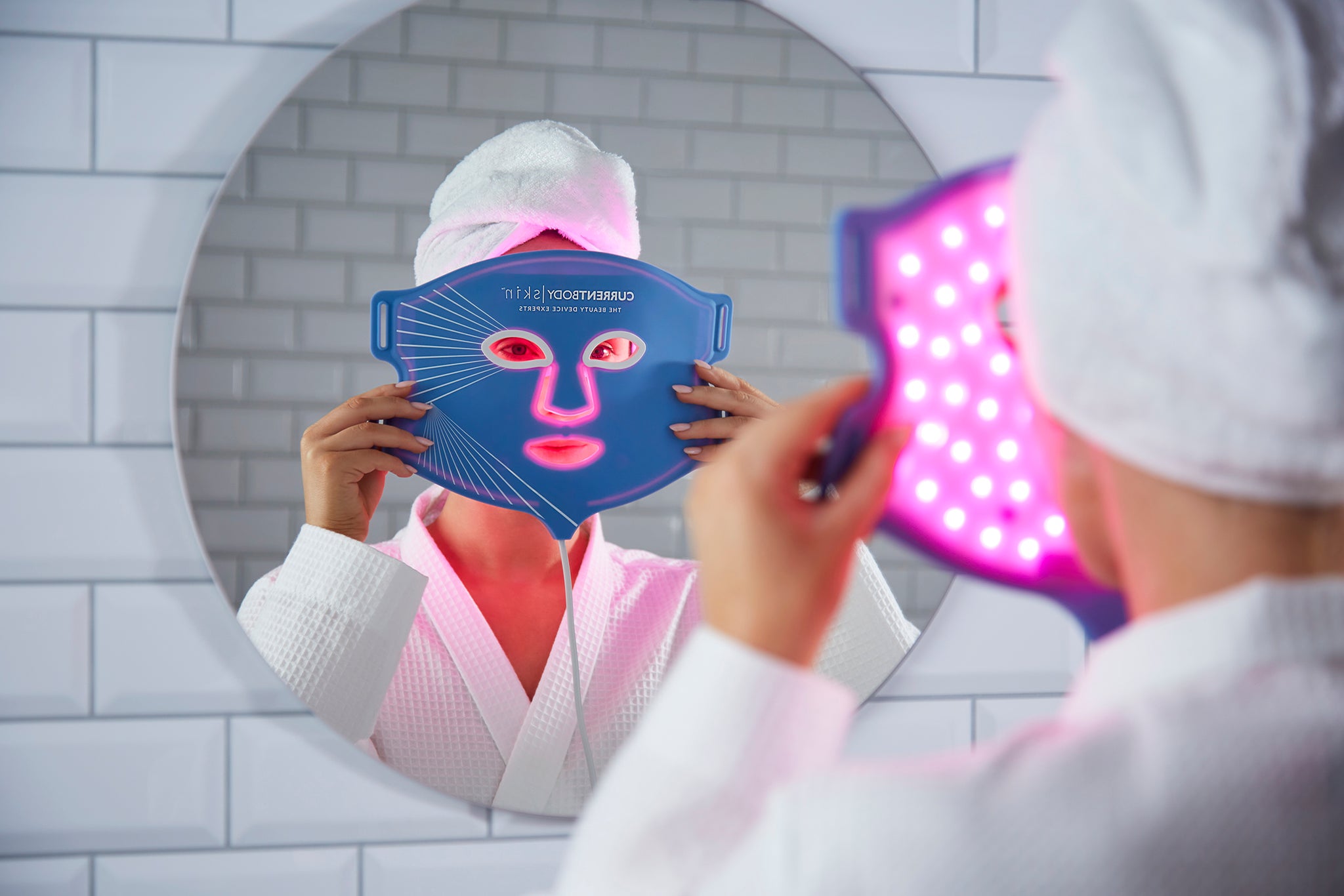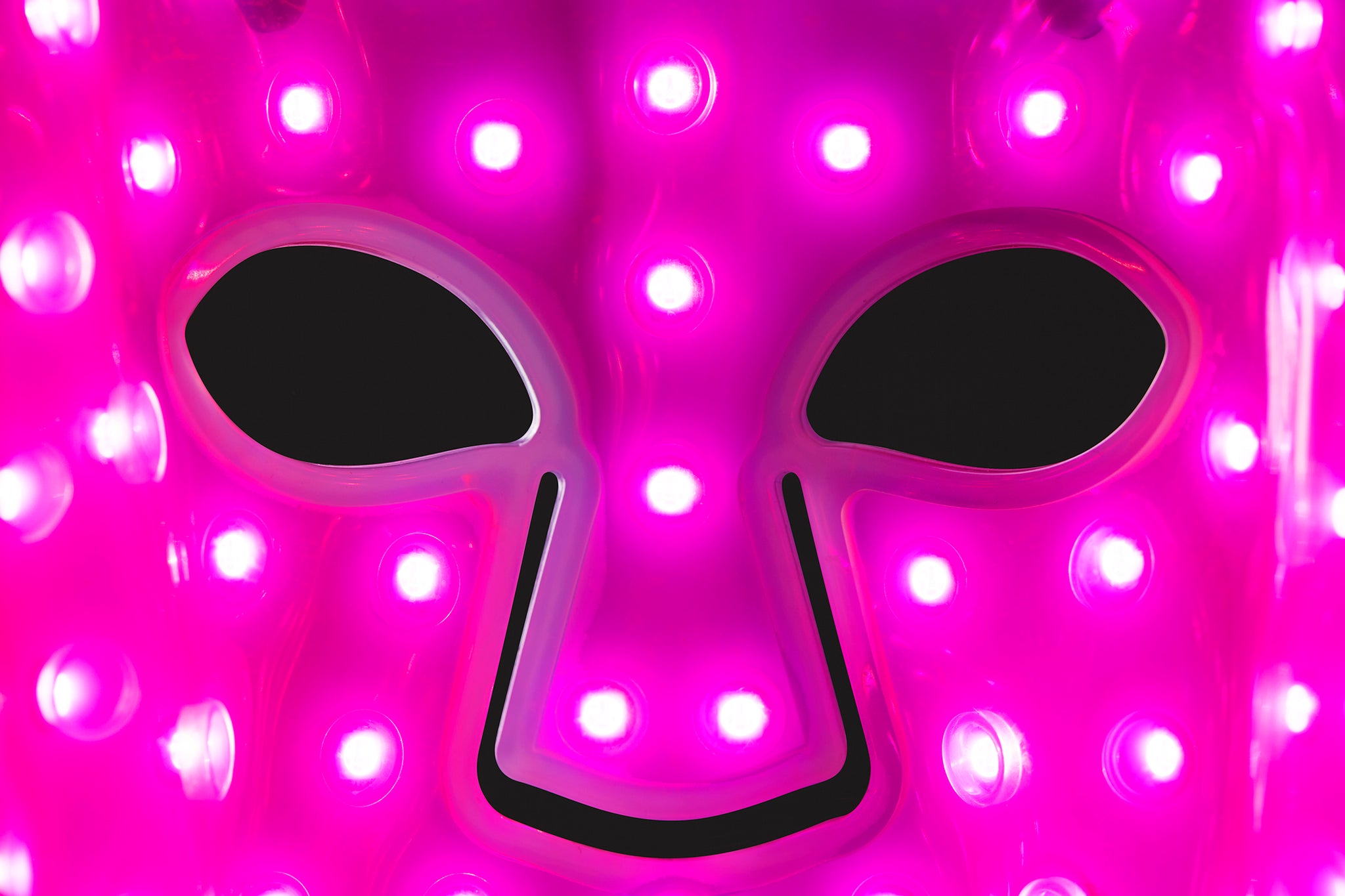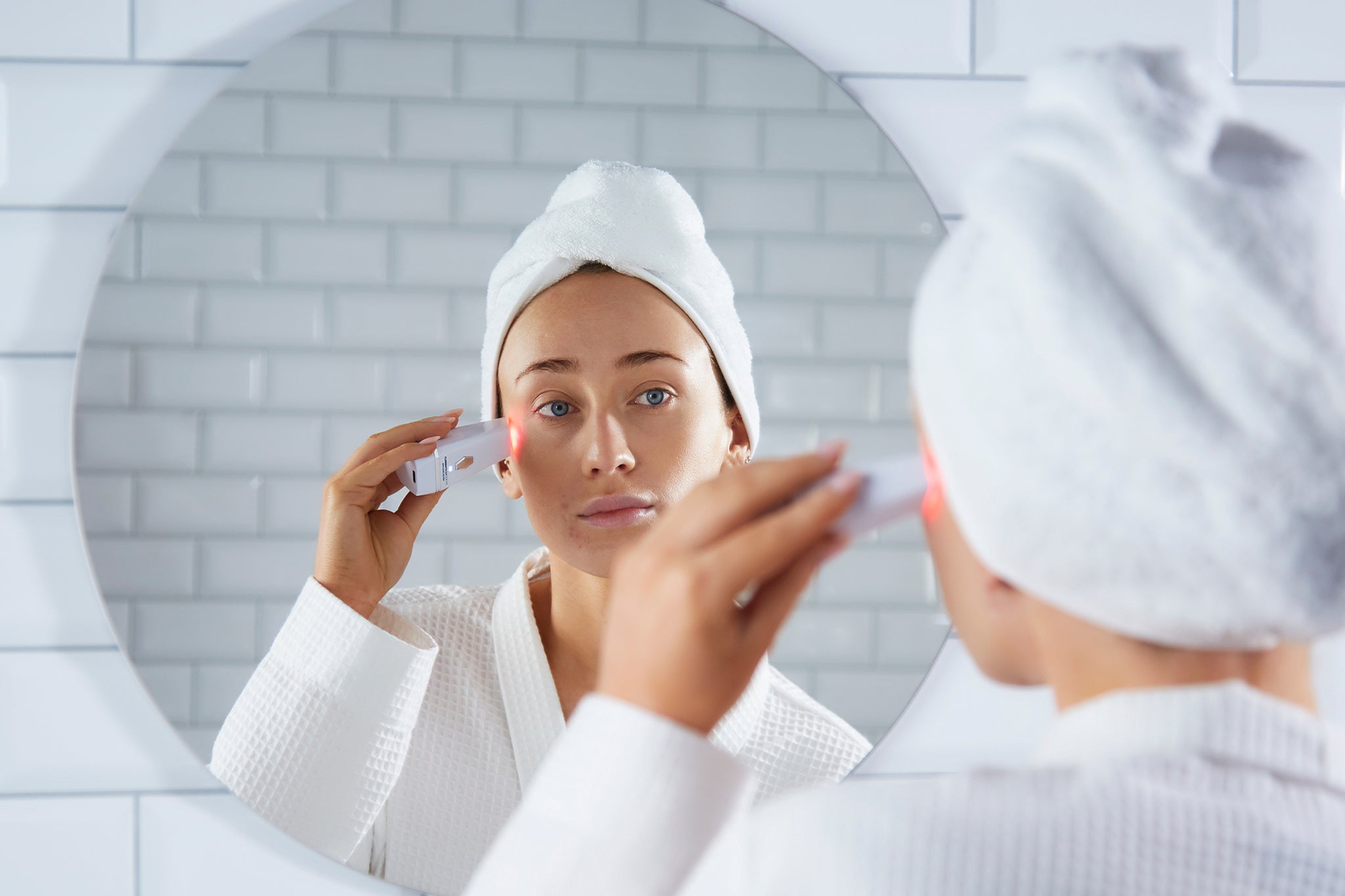Blue light therapy is growing in popularity. It’s a proven treatment for many skin conditions without pain or needles. Naturally, people are becoming curious about blue light facials and if they should invest in blue light therapy at home. To help, we’re answering some common questions about LED and blue LED technology below.
What does LED stand for?
LED (light-emitting diodes) light therapy comes in a range of colours for different wavelengths. Blue light is made up of the shortest waves and carries the most energy. Everyone knows about the blue light that comes from their screens that can keep you awake at night, however, in specific, concentrated doses blue LED light therapy can do wonders for your skin.
What is blue light treatment?
Light therapy started out as NASA technology. Now it's used across a range of visible light spectrums to offer unique skin and pain relief benefits. Blue light facials use a specific wavelength (415nm) to eliminate acne-causing bacteria on the skin’s surface. Blue LED light therapy benefits also include reducing the skin's natural oil production (sebum), helping to manage shine, blackheads and clogged pores—ideal for anyone with mild to moderate acne.

What does blue light therapy do?
It’s most effective against mild to moderate acne. Some professional-grade blue LED devices are also effective for a larger range of concerns including fine lines and wrinkles, hyperpigmentation, redness, psoriasis and muscle or joint pain. That’s because they combine blue light with red light, which has been proven to improve the blue LED light therapy benefits when used together.
Combined red and blue light therapy has gained popularity for its ability to promote collagen production, reduce redness and improve fine lines whilst treating mild acne and blemishes. At home red and blue light treatment devices have become a popular choice for those looking for a versatile solution for maintaining healthy skin.
Does blue light therapy really work?
Yes. In this clinical study, participants saw less acne, blackheads, whiteheads, inflammation and skin irritation following blue light treatment. They felt comfortable administering the treatment by themselves, reported no pain and the study concluded essentially that blue light treatment is effective against mild to moderate acne.

Can you do blue light therapy at home?
Absolutely. There are a wide range of blue LED masks, wands and devices available to home consumers. It's advised that you use these devices up to 3 days a week and for a set amount of time in order to clear mild to moderate acne. Don't forget that consistency is key, and regular blue light therapy sessions will help eliminate surface bacteria long enough to improve the appearance of blemishes and help prevent future breakouts.
In addition to blue light, there's a number of other wavelengths that provide different (and often complementary) benefits. Here's a list of LED wavelengths to help you choose the device best suited to your skin concerns:

Blue light therapy for the face
The best blue LED light therapy device for treating mild to moderate acne on the face is our CurrentBody Skin Anti-Blemish LED Face Mask, which has been proven to clear skin by 90% in just 2 weeks. It combines blue (415nm) light with anti-inflammatory red (633nm) light to effectively reduce redness, swelling and acne-causing bacteria. Together, these wavelengths are 36% more effective at treating acne than blue light alone.
For the odd breakout, the CurrentBody Skin Anti-Blemish LED Pen provides quick spot reduction. Although it uses the same light therapy technology as the Anti-Blemish LED Face Mask, the pen is a smaller, more compact device. It’s perfect for reducing a breakout in 3 minutes, without drying out the skin or disrupting the skin barrier (or your schedule).

If you're looking to specifically target the face, CurrentBody Skin LED Light Therapy Face Mask gives you the perfect combination of red and near-infrared LED lights to target fine lines, wrinkles and skin texture in a comfortable, flexible mask that hugs the face.




